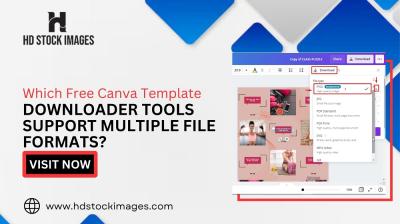PowerPoint 2007 is a powerful tool that revolutionized the way we create and deliver presentations. With its user-friendly interface and enhanced features, it became a favorite among professionals and students alike. Whether you’re pitching an idea or teaching a class, PowerPoint 2007 helps you craft compelling visuals that engage your audience.
One of the standout features of this version is the introduction of the Ribbon interface, which organizes tools in a logical, accessible way. This makes it easier for users to find what they need without rummaging through menus. Additionally, the SmartArt graphics allow for visually appealing representations of data, making your points clearer and more memorable.
In PowerPoint 2007, you also have enhanced multimedia options at your fingertips. You can easily embed videos and audio clips into your slides, making your presentations more dynamic. Coupled with the extensive template library, even those with limited design skills can produce stunning slides in no time.
Overall, PowerPoint 2007 is not just a presentation tool; it’s a platform for storytelling and communication. Its features encourage creativity while ensuring professionalism, making it an essential asset for anyone looking to make a mark in their field.
Getting Started with Your First Presentation
Ready to jump into your first PowerPoint presentation? Let’s walk through the essential steps to get you up and running smoothly!
- Open PowerPoint 2007: Launch the application, and you’ll be greeted with a fresh canvas. Click on “File” and then “New” to start creating your presentation.
- Select a Template: Choose from a variety of pre-designed templates or opt for a blank presentation. Templates can give your slides a cohesive look without extra effort.
- Add Slides: Click on the “New Slide” button in the Home tab. You can choose different slide layouts based on your content needs—be it a title slide, bullet points, or an image layout.
- Insert Text and Images: Click on the text boxes to add your content. Use the “Insert” tab to add images, charts, and SmartArt. Remember, visuals are key to keeping your audience engaged!
- Format Your Slides: Use the options available on the Ribbon to change fonts, colors, and other design elements. Consistency is crucial, so stick to a color scheme.
- Save Your Work: Don’t forget to save your presentation! Click “File” then “Save As” to choose the location and format.
With these steps, you’re well on your way to creating your first professional presentation in PowerPoint 2007. Remember, practice makes perfect, so take your time to explore the features and let your creativity shine!
Also Read This: How to Put an Image on a T-Shirt
Designing Your Slides Effectively
Creating professional presentations in PowerPoint 2007 is all about effective design. The way your slides look can significantly impact how your audience understands and retains your message. Here are some tips to ensure your slides are visually appealing and informative:
- Keep It Simple: Avoid cluttering your slides with too much text or images. A good rule of thumb is to limit each slide to one main idea.
- Use Consistent Layouts: Stick to a uniform layout throughout your presentation. This consistency helps your audience follow along without distractions.
- Choose a Color Scheme: Select a color palette that complements your topic and is easy on the eyes. Tools like the color wheel can help you choose colors that work well together.
- Utilize Fonts Wisely: Use easy-to-read fonts such as Arial or Calibri, and ensure the font size is large enough to read from a distance. Typically, 24 pt for headings and 18 pt for body text works well.
Consider using the slide master feature to set consistent fonts, colors, and styles. This way, every slide you create will automatically adhere to your chosen design, saving you time and ensuring uniformity.
Also Read This: Rey Mysterio’s Wins in WWE Royal Rumble History
Incorporating Visuals and Multimedia
Visual elements can significantly enhance your PowerPoint presentations, making them more engaging and easier to understand. Here’s how to effectively incorporate visuals and multimedia into your slides:
- Images: Use high-quality images that relate to your content. For example, if you're presenting on marketing strategies, consider including graphs that illustrate market trends.
- Charts and Graphs: Visual data representation can help clarify complex information. PowerPoint 2007 offers various chart types like pie charts, bar graphs, and line graphs to illustrate your points clearly.
- Videos: Short video clips can provide context or demonstrate a concept more effectively than text alone. Just be sure to keep them relevant and concise.
- Animations and Transitions: While animations can make your presentation dynamic, use them sparingly. Overusing animations can distract your audience. Simple transitions between slides can help maintain flow without overwhelming viewers.
Remember, the goal of incorporating visuals is to enhance your message, not overshadow it. Strive for a balance where your visuals support your spoken content, making it more impactful and memorable.
Also Read This: Achieving a Flawless, Natural Look with Pancake Foundation
Using Animations and Transitions
When it comes to making your PowerPoint 2007 presentations stand out, animations and transitions can truly elevate your content. But how do you use them effectively without overwhelming your audience?
Animations are great for bringing your slides to life. They allow you to control how text and images appear on your screen. Here are a few tips:
- Focus on Key Points: Use animations to reveal bullet points one at a time. This keeps your audience engaged and focused on what you're saying.
- Keep It Simple: Avoid overly flashy animations. Subtle effects, like a fade-in, can be more professional.
- Consistency is Key: Use the same animation style throughout your presentation to maintain a cohesive look.
Transitions control how you move from one slide to the next. A good transition can create a seamless flow in your presentation. Consider these points:
- Choose Wisely: Use a simple fade or wipe transition for a professional feel. Save the fancy effects for special occasions.
- Time Your Transitions: Adjust the duration of transitions to match your speaking pace, ensuring they don’t distract from your message.
In summary, using animations and transitions thoughtfully can enhance your message, making your presentation not just informative but also visually appealing.
Also Read This: How to Upload a Project on Behance and Share Your Latest Work with the Community
Presenting with Confidence
Confidence can make or break a presentation. You could have the best slides, but if you lack confidence, your message may not resonate. Here are some strategies to help you present with poise:
Practice, Practice, Practice: Familiarity breeds confidence. Rehearse your presentation multiple times, ideally in front of a friend or family member who can provide feedback.
- Know Your Material: Make sure you understand your content thoroughly. The more you know, the less likely you’ll stumble over words.
- Visualize Success: Picture yourself delivering a fantastic presentation. Visualization can help reduce anxiety and boost confidence.
Engage with Your Audience: Make eye contact, smile, and ask questions to involve your audience. This interaction makes you feel more connected and confident.
Manage Your Body Language: Stand tall, use open gestures, and avoid crossing your arms. Your body language communicates just as much as your words.
By combining these tips, you’ll not only deliver your PowerPoint 2007 presentation effectively but also leave a lasting impression on your audience!
Also Read This: How to Create an Engaging Carousel Post on LinkedIn
7. Saving and Sharing Your Presentation
Once you've poured your creativity and effort into crafting a stunning PowerPoint presentation, the next crucial step is saving and sharing it effectively. Here’s how to do it:
Saving Your Presentation:
- File Format: In PowerPoint 2007, you can save your presentation in various formats. The default is the .pptx format, which is perfect for most uses. If you need older compatibility, you can save it as .ppt.
- Saving Locally: Click on the Office button in the top left corner, select “Save As,” and choose a location on your computer to save your presentation. Remember to name your file descriptively!
- Using OneDrive: PowerPoint 2007 doesn’t support direct cloud saving, but if you have OneDrive, you can save your file there for easy access and sharing.
Sharing Your Presentation:
- Emailing: You can email your presentation directly from PowerPoint by selecting the “Email” option under the Office button. This will open your default email client with the presentation attached.
- Exporting as PDF: If you want to share your presentation without allowing edits, consider saving it as a PDF. This can be done by selecting “Save As” and choosing PDF from the format options.
- Using Flash Drives: If you need to share your presentation in a more traditional manner, copying it to a USB flash drive is a quick and reliable option.
8. Conclusion and Final Tips
Now that you've unlocked the basics of using PowerPoint 2007, it’s time to put your newfound skills into action. Here are some final tips to keep in mind:
- Practice Makes Perfect: Familiarize yourself with the features of PowerPoint. The more you practice, the more confident you'll feel on presentation day.
- Stay Consistent: Maintain a consistent theme throughout your slides. This creates a cohesive look and helps your audience follow along easily.
- Engage Your Audience: Use questions, anecdotes, or interactive elements to make your presentation more engaging. A well-engaged audience is more likely to remember your key points.
- Backup Your Work: Always keep a backup of your presentation in case something goes wrong. Whether it’s on the cloud or a USB, a backup can save you stress.
Embrace your creativity, and don’t hesitate to experiment with different styles and formats. With these tips, you're well on your way to delivering an impressive and professional presentation!
 admin
admin








